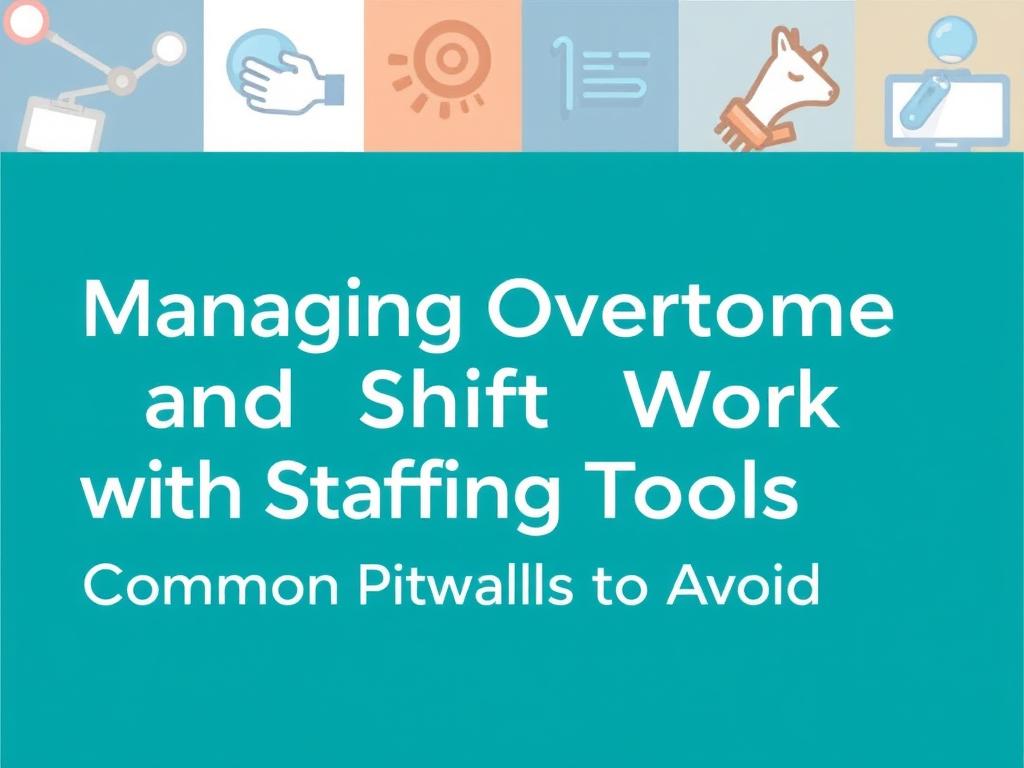Mastering Overtime and Shift Work: How Staffing Tools Revolutionize Workforce Management
Understanding the Challenges of Overtime and Shift Work
Managing overtime and shift work is a constant challenge for businesses across industries. Whether you’re running a manufacturing plant, a healthcare facility, or a retail operation, overtime hours and complex shift patterns can create headaches that affect productivity, employee satisfaction, and operational costs. Traditionally, managers have relied on manual spreadsheets, intuition, or rudimentary scheduling methods to balance workloads and prevent burnout. However, the rising demand for round-the-clock service and the need to stay competitive in today’s fast-paced world make these old methods insufficient. Staffing tools have emerged as the game changers, helping companies streamline scheduling, control overtime, and efficiently manage shift work.
Why Managing Overtime and Shift Work is So Important
Overtime hours might seem like a simple fix when workloads surge, but they quickly snowball into a significant cost factor if not carefully monitored. Unplanned overtime can lead to:
- Increased labor costs, sometimes up to 1.5 or 2 times the regular hourly rate
- Employee fatigue, which reduces productivity and increases safety risks
- Higher turnover rates as employees seek jobs with better work-life balance
- Scheduling conflicts and confusion that disrupt operations
Shift work, especially when it involves rotating shifts or night shifts, adds another layer of complexity. It requires creating fair, flexible schedules while maintaining adequate coverage. Employees working irregular hours often face health issues and social disruptions, making shift fairness a priority for retention.
How Staffing Tools Help Balance Overtime and Shift Schedules

Modern staffing tools are designed to automate and optimize the complex process of scheduling, helping managers reduce unnecessary overtime and improve shift allocations. These tools offer features such as:
| Feature | Benefit |
|---|---|
| Automated Scheduling Algorithms | Creates optimal shift patterns minimizing overtime risks while ensuring coverage |
| Real-Time Overtime Tracking | Alerts managers before overtime thresholds are breached, reducing unplanned hours |
| Employee Availability Management | Allows workers to set their preferences, leading to fairer schedules and less dissatisfaction |
| Analytics and Reporting | Identifies trends in overtime and shift coverage to inform better staffing decisions |
| Mobile Access | Enables employees to view and swap shifts, reducing administrative effort and improving communication |
By leveraging these capabilities, organizations can proactively manage overtime, rather than reacting to crises, and design shift schedules that work for both business needs and employees’ lives.
Tips for Implementing Staffing Tools to Manage Overtime and Shifts
Integrating staffing tools into your workflow doesn’t happen overnight. Here are important steps to ensure success:
- Assess your current scheduling challenges: Identify where overtime frequently spikes or shifts are understaffed.
- Involve your employees: Gather input on shift preferences and overtime concerns to build buy-in.
- Choose the right tool: Look for features tailored to your industry and workforce size.
- Train managers and staff: Ensure everyone understands how to use the system and the benefits it offers.
- Regularly review data and adjust: Use the system’s analytic reports to fine-tune schedules and overtime policies.
Common Pitfalls to Avoid

When managing overtime and shift work with staffing tools, it’s crucial to avoid these pitfalls:
- Ignoring employee feedback, which can cause dissatisfaction and increase turnover.
- Over-reliance on automation without human oversight, leading to unrealistic schedules.
- Failing to monitor overtime trends continuously, missing signs of emerging problems.
- Deploying tools without proper training, causing confusion and inconsistent usage.
The Future of Overtime and Shift Work Management

With advances in technology like artificial intelligence and machine learning, staffing tools are becoming even smarter. Predictive analytics can anticipate workload surges and prevent overtime, while employee wellbeing features support healthier shift patterns. Integration with payroll and HR systems streamlines processes further, reducing errors and saving time.
Moreover, the growing focus on employee experience means that fair and transparent shift work management will be a key differentiator for attracting and retaining talent. Staffing tools are not just administrative aids anymore — they’re strategic enablers that help organizations thrive in a competitive environment.
Conclusion
Managing overtime and shift work used to be a juggling act filled with guesswork and last-minute fixes. Today, staffing tools have transformed this challenge into an opportunity for smarter, more efficient workforce management. By automating scheduling, providing real-time insights, and incorporating employee preferences, these tools help reduce costly overtime, increase fairness in shift allocation, and improve overall operational success. Companies that embrace these technologies will not only save money but also create a healthier, more motivated workforce prepared to meet the demands of a 24/7 economy. If you’re ready to master overtime and shift work, sourcing the right staffing tools and investing in thoughtful implementation is the way forward.






